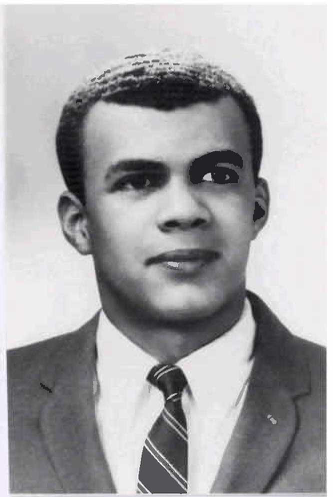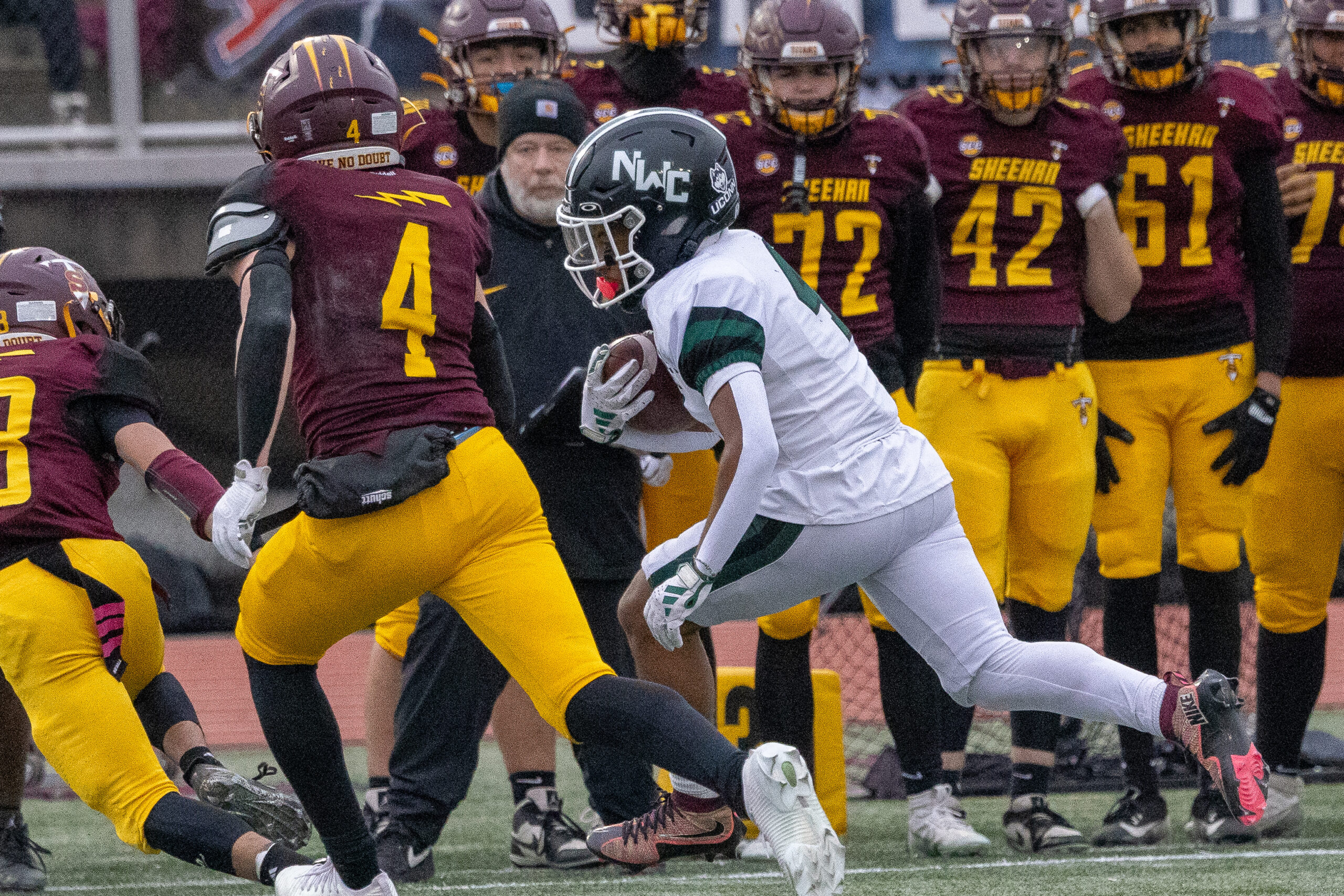Op-Ed: Black History Month Part III, Perspective of a West Hartford Native

Audio By Carbonatix

Jim Johnson as a young man. (we-ha.com file photo)
An essay by James A. Johnson, Conard ’60.
By James A. Johnson
“Men talk of the Negro problem. There is no Negro problem. The problem is whether American people have honesty enough, patriotism enough to live up to their constitution.” – Frederick Douglas 1893
What is it like to be a Black person in white America today?
A common white credo about racial relations today is that discrimination is no longer a serious and widespread problem. Whatever blatant anti-Black hostility remains is mostly that of isolated white bigots. Middle class Blacks are thought by many whites to be the vicarious beneficiary of the civil rights movement of the 1960s. White Americans do not see racial discrimination as a widespread problem in schools, courts, workplaces and other institutions. They believe that middle class Black Americans have secured the promises of the American dream. However, the Black middle class still experience hostility and serious discrimination. In workplaces, business arenas, residential complexes, schools, and colleges racial stereotyping, hostility and prejudice operate indiscriminately.
DIFFERENT VIEWS
Most white Americans do not see racial discrimination as a deeply entrenched problem. White and Black Americans have different views about racism in that whites see serious racism as the actions of extreme bigots. This is true even in the face of the growing number of hate crimes targeting Black Americans.
Whites cannot even begin to understand the character, pain, and meaning of the Black daily experience. Listening to Black people talk about everyday experiences is important for whites who wish to understand the contemporary situations and experiences of Black Americans.
Black people will tell you without hesitation “Racism in America is Alive and Well!” However, this writer will admit that racism is no longer the all-encompassing force that held all Black people down. But, racism is an everyday experience for people of color no matter how small the comment or threatening the hateful stare may be.
Discrimination is not less burdensome because it is subtle. It is a constant battle dealing with racism. It is exhausting being Black in America – both physically and emotionally. There is no escape from your color. Racism is enforced both consciously and unconsciously and maintained by legal and cultural institutions in our society. Racism is more that than just a personal attitude – it is the institutional form of that attitude. For over a century and a half it is a burden that no other racial or ethnic group has had to endure.
Black maleness today is a potentially fatal condition. Being Black could turn an ordinary situation into a death moment. An unarmed Black male is 10 times more likely to be killed by a police officer than an unarmed white male.
SEDGWICK & CONARD
Can you imagine what it would be like for a person of color growing up who never experienced significant discrimination?
Enter Jimmy and Sandy Johnson of Sedgwick and Conard. Our experiences in West Hartford were extraordinary. Nobody called me names nor did the girls refuse to dance with me at school dances or at house parties. In comparison to other African Americans nationwide my story is worthy of a motion picture.
It was not until I entered the larger society did I encounter the sting of prejudice and discrimination. It was an adjustment because I was not prepared for it.I was hit with a double whammy. Both white and Black people were envious of my good looks, intelligence, athleticism, demeanor, and the four-bedroom house with two or three cars in the driveway.
Ironically, to this very day I am still adjusting in being careful in what I disclose about my personal and family background. Notwithstanding, it is my experiences in West Hartford – a nurturing environment together with having great parents and siblings that has sustained me. To my teachers, friends and classmates I offer my THANK YOU! Moreover, I sincerely hope that you have learned as much from me as I have learned from you.
To fully understand this story, I suggest that you read “Black History Month – Part II on We-Ha.com.
CONCLUSION
Despite the prevalent white view that racism is diminishing, African Americans are routinely subjected to subtle humiliations and overt hostility. This litany of abuse is deeply imbedded in American institutions and shapes their personal and professional lives. Black parents face the daunting task of preparing their children for racial sleights and obstacles.
Blacks know more about whites and white culture than whites know about Blacks. We have to know because our survival depends upon it. Parents have to devote considerable time and energy to a task with which white parents are not burdened.
Because I grew up in West Hartford and attended Sedgwick and Conard neither I nor my family were smothered by racism.
The burning of three black churches in March 2019 in St. Landry Parish, Louisiana serves as a reminder of racism’s continuing legacy.
In closing, I paraphrase President Lyndon Johnson’s speech to Congress on March 15, 1965: “I speak tonight for the dignity of man and the destiny of democracy. It is not a Negro problem but an American problem to solve the crippling legacy of bigotry and injustice. And we shall overcome.”
About the Author
James A. Johnson is an accomplished trial lawyer, transactional attorney and a proud ambassador of West Hartford. He is an active member of the Massachusetts, Michigan, Texas, and Federal Court bars. Jim concentrates on serious personal injury, insurance coverage, entertainment and sports law, and federal criminal defense. He can be reached at www.JamesAJohnsonEsq.com
We-Ha.com will accept Op-Ed submissions from members of the community. We reserve the right to edit all submitted content.
Like what you see here? Click here to subscribe to We-Ha’s newsletter so you’ll always be in the know about what’s happening in West Hartford! Click the blue button below to become a supporter of We-Ha.com and our efforts to continue producing quality journalism.




I was a classmate of Jim Johnson at Conard High School and had the good fortune to know him and his sister Sandra. Jim was a great basketball player and the whole school cheered him as much as the other players. Jim is totally correct that race was never and issue in the school. Jim and Sandra were highly respected classmates and I am proud of the attitude of my former classmates. We were certainly ahead of the times when we considered the content of character far more important than the color of skin. Hopefully the time will soon come when the world can believe in the Judaeo-Christian teaching that all human beings are created in God’s image.